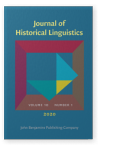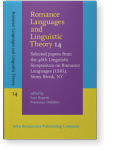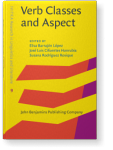Cristina Sánchez López
List of John Benjamins publications for which Cristina Sánchez López plays a role.
2021 El cuantificador complejo del español algún que otro Revue Romane 56:2, pp. 327–352 | Article
En este trabajo analizamos la estructura interna y las propiedades semánticas del cuantificador complejo inespecífico del español algún que otro. Sostenemos que el que de algún que otro y sus variantes (algunos que otros, uno que otro, unos que otros) es una conjunción coordinante disyuntiva con… read more
2018 Chapter 17. Romance evaluative que/che/să sentences as inverted optatives Romance Languages and Linguistic Theory 14: Selected papers from the 46th Linguistic Symposium on Romance Languages (LSRL), Stony Brook, NY, Repetti, Lori and Francisco Ordóñez (eds.), pp. 293–307 | Chapter
Romance exclamative sentences introduced by the conjunctions que (Spanish, French, Portuguese) and che (Italian) ‘that’ and the Romanian particle să plus a subjunctive verb can receive an evaluative meaning and express the speaker’s displeasure or discontent about the propositional content. This… read more
2017 Mirativity in Spanish: The case of the particle mira The Linguistic Expression of Mirativity, Celle, Agnès and Anastasios Tsangalidis (eds.), pp. 489–514 | Article
This paper analyzes how the semantic category of mirativity is expressed by means of particles in standard Spanish. Specifically, I study the verb-based particle mira ‘look’, and argue for considering it as a mirative particle, which marks the sentence it modifies like new and unexpected… read more
2016 Person features and functional heads: Evidence from an exceptional optative sentence in Ibero-Romance Romance Languages and Linguistic Theory 10: Selected papers from 'Going Romance' 28, Lisbon, Carrilho, Ernestina, Alexandra Fiéis, Maria Lobo and Sandra Pereira (eds.), pp. 259–278 | Article
This paper provides empirical support to the hypothesis that clause typing operators can bear person features and contribute to the sentence not only semantically but also syntactically. Assuming that optative sentences contain an EX operator that combines with a proposition and turns it into the… read more
2015 Sentences as predicates: the Spanish construction ser <muy de + infinitive> New Perspectives on the Study of Ser and Estar, Pérez-Jiménez, Isabel, Manuel Leonetti and Silvia Gumiel-Molina (eds.), pp. 85–116 | Article
The construction <muy de + infinitive> is interpreted as a gradable individuallevel
predicate (IL-predicate), compatible with the copula ser but not with
the copula estar. This supports the idea that the ser and estar distinction is a
particular manifestation of Carlson’s (1977) distinction between… read more
2015 On events that express properties Verb Classes and Aspect, Barrajón López, Elisa, José Luis Cifuentes Honrubia and Susana Rodríguez Rosique (eds.), pp. 238–263 | Article
This paper provides empirical support to the hypothesis that habitual readings and dispositional/capacitative readings are different kinds of generic statements, generated by different operators: an aspectual operator HABASP is responsible for the habitual reading and a like modal dispositional… read more
2014 Chapter 6. The left periphery of Spanish comparative correlatives Left Sentence Peripheries in Spanish: Diachronic, Variationist and Comparative Perspectives, Dufter, Andreas and Álvaro S. Octavio de Toledo y Huerta (eds.), pp. 155–184 | Chapter
Spanish correlatives are argued to involve a predication relation articulated upon a null predicator head, both in correlatives with tanto... cuanto... ‘as... as...’ and in comparative correlatives with cuanto más/menos... (tanto) más/menos... ‘the more/less... the more/less ...’ . The predication… read more
2004 Contrast and Addition in Romance: A case study in microvariation Contemporary Approaches to Romance Linguistics: Selected Papers from the 33rd Linguistic Symposium on Romance Languages (LSRL), Bloomington, Indiana, April 2003, Auger, Julie, J. Clancy Clements and Barbara Vance (eds.), pp. 159–176 | Article








